Results 5,311 to 5,320 of 12096
Thread: Anandtech News
-
09-02-15, 02:30 PM #5311
Anandtech: Lenovo Unveils A Trio Of New Android Tablets.
Today Lenovo has launched three new Android tablets in their YOGA Tab series. In order the new devices are the YOGA Tab 3 8", the YOGA Tab 3 10", and the YOGA Tab 3 Pro 10". The first two tablets are fairly low-end devices, while the YOGA Tab 3 Pro is probably the most unique Android tablet that I have ever seen. You can see how these tablets compare to each other by checking out the spec table below.
The YOGA Tab 3 8" and 10" use Qualcomm's Snapdragon 212 SoCs, which are both quad core Cortex A7 parts with Adreno 304 graphics. As for the Yoga Tab 3 Pro 10", it's a much more interesting situation. This is one of the first devices shipping with an Intel Airmont SoC, and to my knowledge the first and only Android device to do so. This is Intel's first Atom SoC built on their 14nm process, and it consists of 4 Atom cores with a peak frequency of 2.24GHz, along with a 12 EU implementation of their Gen8 graphics.Lenovo YOGA Tab Series Model Lenovo YOGA TAB 3 8” Lenovo YOGA TAB 3 10" Lenovo YOGA TAB 3 Pro 10” SoC 1.3GHz Snapdragon 212 1.3GHz Snapdragon 212 Intel Atom x5-Z8500
Quad core, 2.24GHzRAM/NAND 1GB / 16GB NAND
MicroSD1GB / 16GB NAND
MicroSD2GB RAM, 16/32GB
NAND + MicroSDDisplay 8" 1280x800 IPS LCD 10.1" 1280x800 IPS LCD 10.1" 2560x1600 IPS LCD Dimensions 210 x 146 x 3 to 7mm 253 x 185 x 3.5 to 9.5mm
655g179 x 247 x 4.6mm at thinnest point, 665g Camera 8MP Rotatable Camera 13MP Rear-facing
5MP Front-facingBattery 6200mAh (23.56Wh) 8700mAh (33.06Wh) 10200mAh (38.76Wh) OS Android 5.1 Lollipop Android 5.0 Lollipop Android 5.1 Lollipop Connectivity 802.11b/g/n + BT 4.0, microUSB 2.0, Optional LTE SKU 2x2 802.11a/b/g/n/ac + BT 4.0,
microUSB 2.0, Optional LTE
Moving on to the displays, we see that both of the non-pro YOGA Tabs use a 1280x800 IPS LCD. The YOGA Tab Pro steps up significantly with a 10.1" 2560x1600 IPS LCD. It's fairly clear that the non-pro YOGA Tabs are intended to be low-end tablets, with the pro model packing the more powerful specifications. One that immediately pops out is the battery capacity. At 38.76Wh, it is the biggest battery I've ever seen in an Android tablet, and it rivals the enormous batteries that Apple had to put in the 2012 models of the iPad. Lenovo claims that the YOGA Tab 3 Pro 10" will last up to 18 hours on its battery.
The YOGA Tab 3 Pro 10" also has a couple more interesting features. While both of the non-pro models feature two front facing speakers positioned in the tube at the end of the device, the YOGA Tab 3 Pro 10" has four front-facing speakers, along with Dolby's Atmos 3D surround sound processing. It also features a pico projector that can project an image up to 70" in size with a brightness of 50 nits. Lenovo states that the projector can be rotated using gesture controls, although it's not explained exactly how this works or what it entails.
Lenovo hasn't set a firm date for the launch of any of these tablets, but their press release states that these are part of their holiday lineup, and so if you're interested in buying one you should be able to pick one up sometime in December at the latest. Prices for the YOGA Tab 3 8" and 10" are unknown, but the YOGA Tab 3 Pro 10" is priced at $499 for the WiFi model, and $599 for the LTE model.
More...
-
09-02-15, 03:30 PM #5312
Anandtech: Motorola Launches The New Moto 360 Collection
Today Motorola has officially announced the long rumored second generation of the Moto 360. While details are still unknown about the display resolution or some aspects of the internal hardware, there are still a number of things that can be identified based on Motorola's press release and the Moto Maker studio.
The first thing to note is that the Moto 360 will actually come in two versions. The first is the standard Moto 360 which has a similar design to the first generation. It now comes in two sizes, with the smaller size having a 42mm watch case and the larger being 46mm. Users who find a 42mm watch to be too large appear to be left out in the cold again, and it'll be interesting to see how the user demographics are split between different heights, genders, etc. From Motorola's images we can also see that the display still has the gap at the bottom where the display driver is stored.
The normal Moto 360 can be completely customized with Moto Maker. The 42mm model comes with default color and band settings for both men and women, which I kind of understand but I feel is misguided when your entire platform is allowing users to make it however they wish. Both of the 42mm models allow you to customize the case color, the band, the bezel color, and the default watch face. Depending on what size and band you choose, the price will range from $299 to $429 in the US. Motorola is allowing users in the US to customize and pre-order their watches right now, and even if you're not in the US it provides a way to check out the different options Motorola provides.
Ignoring the size segmentation, the second device in the Moto 360 Collection is the new Moto 360 Sport, which is is more rugged and has some unique features of its own to distinguish it from the normal edition. The band is made of silicone, which also surrounds the watch case and resists moisture, fading, or staining. It's important to note that this strap is fixed in place, so you won't be able to switch it with other colors or completely other straps. The Moto 360 Sport also comes with integrated GPS, which allows for accurate position and distance tracking when jogging or cycling without a smartphone. As for the display, Motorola is calling it an AnyLight display, which they say acts as a typical LCD when indoors but reflects natural light when outdoors to maintain readability.
Both versions of the Moto 360 are now powered by a Snapdragon 400 SoC, which is a change from the TI OMAP platform in the previous version. Motorola hasn't said anything about the display resolution other than that it's "higher" than the previous generation model. The battery capacity of both is unknown, but Motorola claims that the 46mm model will last two days between charges, while the 42mm model will last 1.5 days.
As I mentioned earlier, customers in the US can pre-order the Moto 360 now from Moto Maker. Availability in other countries will be announced in the future, as well as availability of the Moto 360 Sport which is currently not available even in the US.
More...
-
09-02-15, 04:01 PM #5313
Anandtech: Huawei Launches Mate S - Hands On
Today at Huawei's IFA Berlin 2015 launch event the Chinese handset maker launched it's new fall flagship device, the Mate S.
The new 5.5" form-factor places the Mate S along-side other similarly sized devices such as LG's G4. This new form factor is a bit of a departure from previous designs for Huawei. The company has never offered a 5.5” phone before, their previous large format phone being the 6” Mate 7. This makes the Mate S more of a derivative of the Mate 7 than a successor, if not a new product category entirely.
Starting off, let's start with the spec sheet of the device:
The Mate S ships with HiSilicon's Kirin 935 SoC at the heart of the device. We have already taken a look at the Kirin in our review of the P8 a few months ago and found that the chipset exhibited some worrisome power consumption characteristics that lead to some reduced battery life. We had hoped HiSilicon would have been able to ship its next-generation SoC, the Kirin 950, in Huawei's fall flagship but I've been told that the chipset isn't ready till 2016 and likely will only find itself in Huawei's next spring lineup.Huawei Mate S SoC HiSilicon Kirin 930
4x Cortex A53@1.5GHz,
4x Cortex A53e@2.2GHz
Mali-T628MP4RAM 3GB LPDDR3 NAND 32GB/64GB NAND (128GB in 2016) + microSD Display 5.5” 1080p SuperAMOLED
Gorilla Glass 4
+ Force Touch in 128GB model (2016)Modem 2G/3G/4G LTE Cat 6
(Integrated HiSilicon Balong Modem)Networks TDD LTE B40 FDD LTE B1/B2/B3/B4/B5/B7/B8/B12/B17/
B18/B19/B20/B25/B26/B28UMTS 850/900/AWS/1900/2100
(B19/B8/B6/B5/B4/B2/B1)DC-42M B1/B2/B4/B5/B8 GSM 850/900/1800/1900 Dimensions 149.8 x 75.3 x 7.2 mm,
156 gramsCamera Rear Camera w/ OIS
13MP (4160 x 3120)
Sony IMX278 Sensor
F/2.0 aperture, 29mm eq.Front Facing Camera
8MP Sony IMX179
F/2.4 aperture, 26mm eq.Battery 2700mAh(10.39 Whr) OS Android 5.1.1 (64-bit)
EmotionUI 3.1Connectivity 802.11a/b/g/n 2.4GHz only
BT 4.0, microUSB2.0, GPS/GNSS,
DLNA, NFCSIM Size NanoSIM +
NanoSIM (w/o microSD)
On the network side, we see that the Mate S supports a very wide range of frequency bands which should allow the western variant of the phone to function on most carrier networks. Still connectivity related, I was disappointed to see that Huawei yet again fell back to Broadcom's aging BCM4334 WiFi chipset. Also similar to the P8, the Mate 2 doesn't come with support for 5GHz WiFi, a very concerning characteristic for a device of this price.
On the camera side, the Mate 2 directly adopts the camera system from the P8. This means a Sony IMX278 13MP RGBW sensor with OIS and an IMX178 8MP front-facing shooter. The camera uses a high-performing external ISP for advanced image processing. A new addition is a soft LED torch on the front of the phone specifically design for selfies.
Design-wise the back of the Mate S looks extremely similar to the Mate 7; it would be hard to distinguish them straight-on if it weren't for their size difference. There is however one big change in the design of the phone: the back curvature. Together with the rounded bezels of the 2.5D screen, this results in the edges of the Mate S being extremely thin, far less than the 7.1mm maximum thickness at the centre of the device. Both of these design features make the Mate S one of the most comfortable devices I've used to date.
The Mate S also improves on previous Mate products in terms of build-quality. The aluminium of the full-metal body comes with a finer grain than what was found on the P8, yet still seems grippier than the Mate 7's finish. The new 2.5D glass front is also surrounded by a much higher-quality material, which I'm not sure if it's metal or a glass extension. The Mate 7 here featured a little plastic rim that could be easily chipped when dropped.
I was extremely surprised when I unpacked my unit as I came to the realization that the device comes with an AMOLED screen. This wasn't specified in the launch presentation and something that I overlooked in the bright lights of the demo unit stands. A quick dig through the device's drivers revealed that Huawei is using one of Samsung Display's higher-end DDICs. The screen also managed to get extremely bright, not unlike the Galaxy S6, so we might be looking at one of SDI's latest generation screens.
The 1080p screen is visibly using a diamond-grid pentile pixel matrix, although it's not noticeable until you get close to the screen. The Note 3 is probably the best comparison device here when it comes to the sharpness of the screen. Huawei's colour profile seemed a bit saturated in terms of colour calibration, but I won't be able to tell more until I get to measure it properly for the device's review.
A big feature that was touted during the launch was the reveal of "Force Touch" - a new input method where the screen is able to sense the amount of pressure one applies to touches. Huawei demonstrated a few features such as zooming via touch pressure or being able to use the bezels of the screen as input areas. The device even comes with a scale application that is supposed to be able to approximate an object's weight when you place it on the screen.
The catch however is that the Force Touch feature is limited to the 128GB model which according to Huawei won't be available until next year, and furthermore won't be released in all regions. It seems like the feature is not yet mass-production ready and Huawei is looking for suggestions and ideas on how the feature might could get used - meaning the software and functionality is still in the early stages.
The Mate S comes in Luxurious Gold, Titanium Grey (pictured) and Mystic Champagne colour options in 32GB and 64GB storage options for 649€ and 699€ respectively, and will be available in select markets in the coming weeks and months.
More...
-
09-02-15, 05:00 PM #5314
Anandtech: Qualcomm Announces Kryo CPU Details: 2.2 GHz, 14nm FinFET
Today, Qualcomm announced a number of details in the Snapdragon 820, specifically about their Kryo CPU. Given that the Snapdragon 810 was a somewhat standard 4x Cortex-A57/4x Cortex-A53, it was clear that that this chip was a stop-gap for a future fully custom design. With the Snapdragon 820 announcement, the first major bit of information that we received was that this would be a return to a custom CPU core design, and today Qualcomm is finally unveiling a bit more information on Kryo.
The two main spec details that are being disclosed today is that the Kryo CPU in Snapdragon 820 will reach up to 2.2 GHz, and that the SoC will be manufactured on Samsung’s 14nm FinFET process. It isn’t stated whether this is the 14LPP process, which will give up to 10% transistor performance improvement over 14LPE which was seen in chips like the Exynos 7420, but it’s a safe bet that it is. As a result of the new architecture and new process node, Qualcomm is claiming up to a 2x increase in performance and up to a 2x increase in power efficiency compared to Snapdragon 810.
The final part of this announcement is Symphony System Manager, which is said to be designed to deal with heterogeneous compute in an efficient manner. This is likely to be a kernel-level mechanism that ensures that the SoC is well-optimized for use in a smartphone or any other application. Given the focus on heterogeneous compute for this launch, I wonder if Qualcomm is going for some form of heterogeneous CPU design as well.
More...
-
09-02-15, 05:00 PM #5315
Anandtech: Asus RT-AC5300U 802.11ac Router - 4x4 MU-MIMO with Broadcom XStream
Asus announced the RT-AC5300U 802.11ac router using Broadcom's tri-band Wi-Fi chipset at IFA 2015 today. This is meant to be a flagship router with AC5300 speeds (1000 Mbps on the 2.4 GHz band and 2167 Mbps on each of the 5 GHz bands for a total of 5333 Mbps theoretical bandwidth). The router uses Broadcom's latest Wi-Fi chipset along with the XStream platform concept.
As a recap, Broadcom's XStream involves combining two discrete 802.11ac radios in a single board, thereby allowing for two different channels to be simultaneously active in the 5 GHz band. Essentially, this concept combines two Wi-Fi routers in one. Initially introduced in a six stream configuration using Broadcom's second generation 802.11ac chipset, it was even demonstrated by Asus at Computex 2014. At CES earlier this year, Broadcom updated their 802.11ac portfolio with some new products sporting Wave 2 features. D-Link also simultaneously announced their ULTRA series using Broadcom's chipsets. The DIR-895L AC5300 was the flagship that combined the Broadcom 4x4 MU-MIMO solution with the XStream concept. The Asus RT-AC5300U being announced today uses the same platform (BCM4709, a 1 GHz dual-core Cortex-A9 based processor combined with three BCM4366 radios) and has similar features.
Broadcom's proprietary NitroQAM / TurboQAM technology helps in low-latency and high bandwidth requirement scenarios (as long as the client side also has Broadcom silicon). The router sports eight external dual-band detachable antennae. Internally, there iis 128 MB of flash and 256 MB of DDR3 RAM. The other features are standard - 1x WAN and 4x LAN Gigabit ports, 1x USB 3.0 and 1x USB 2.0 port.
The router will be available for purchase sometime in Q4 2015. There is no information on the pricing yet.
More...
-
09-02-15, 06:00 PM #5316
Anandtech: Sony Launches The Xperia Z5, Z5 Compact, and Z5 Premium With UHD Display
In April of this year Sony launched the Xperia Z4, their sequel to the 2014 Xperia Z3. Since the Z3 had only launched in September of 2014, it was a bit odd that it was being replaced after only six months as Sony's flagship device. However, The Xperia Z4 seemed like something of a stopgap device when one considered its specs and its design, and outside of Japan Sony even marketed it as the Xperia Z3+ rather than the Z4.
Today Sony launched three new smartphones branded as Xperia Z5. The first is the standard Xperia Z5, the second is the Z5 Compact, and the most interesting of the three is the Xperia Z5 Premium. All of these devices seem more like what one would expect from successors to the Xperia Z3, and below you can find the specifications for each device.
Based on the specifications of each device, I have to hand it to Sony for offering a variety of device sizes that don't really compromise on specs as the size gets smaller. All three phones use Qualcomm's Snapdragon 810 SoC, and while the Z5 Compact comes with 2GB of RAM, the normal Z5 and Z5 Premium comes with 3GB. All three phones include 32GB of NAND and have MicroSD slots.Sony Xperia Z5 Series Model Xperia Z5 Compact Xperia Z5 Xperia Z5 Premium SoC Qualcomm Snapdragon 810 MSM8994 RAM/NAND 2GB / 32GB NAND
MicroSD3GB RAM, 32GB NAND + MicroSD Display 4.6" 1280x720 IPS LCD 5.2" 1920x1080 IPS LCD 5.5" 3840x2160 IPS LCD Dimensions 127 x 65 x 8.9 mm
138g146 x 72 x 7.3 mm
154g154.4 x 76.0 x 7.8 mm
180gCamera 23MP Sony IMX230 Rear-facing, 1/2.3", F/2.0, 24mm focal length 5MP Front-facing, 25mm focal length Battery 2500mAh (10.26Wh) 2900mAh (11.02Wh) 3430 mAh (13.03Wh) Connectivity 1x1 802.11a/b/g/n/ac 2x2 802.11a/b/g/n/ac Bluetooth 4.1, DLNA, NFC, MHL 3, microUSB 2.0, GNSS, Fingerprint Scanner OS Android 5.1 Lollipop SIM NanoSIM
The displays are where you do end up losing out if you don't go for the largest device. The Z5 Compact has a 4.6" 1280x720 display, which I do find myself wishing was a higher resolution than it is. The normal Xperia Z5 has a 5.2" 1920x1080 display, and I'm very comfortable with this resolution as a good balance between size and sharpness. With the Xperia Z5 Premium Sony has gone all out and outfitted it with a 5.5" 3840x2160 display. This makes the Xperia Z5 Premium the first smartphone ever to ship with a UHD display.
With a pixel density of 801 pixels per inch, there's really no way that you would be able to see any pixels or aliasing on the Xperia Z5 Premium's display, with the exception of edge cases like Vernier Acuity. I have a feeling that the Z5 Premium is going to create a lot of debate about whether or not such a high resolution even provides any visual advantage over QHD or even 1080p. It'll also be interesting to see whether people feel it makes a difference when reading Logographic languages which can have very fine details on characters.
Looking at the camera, we see that all three of the smartphones ship with the exact same camera system. The specific camera sensor used is Sony's IMX230, which is a 23MP 1/2.3" sensor with 1.12 micron pixels. The lens used has a 35mm equivalent focal length of 24mm, and an aperture of F/2.0. Sony's hybrid autofocus with PDAF enables an autofocus time of just 30ms. All versions of the Xperia Z5 can record UHD video at 30fps, and the high resolution sensor can also be used to perform digital zooming or image downscaling to 8MP in order to reduce Bayer artifacts.
Naturally, the dimensions, mass, and battery capacity of each device scales with its size. All of them seem appropriate given the dimensions of the phone, but I'm very interested to see what sort of battery life the Z5 Premium gets in a display bound battery test like web browsing. All three phones support Qualcomm's Quick Charge 2.0 technology for fast charging speeds.
As for the design of Sony's new phones, it doesn't depart much from the design principles that Sony's flagship mobile devices have always adhered to. All of them have metals frames and frosted glass backs. They do come in different colors, with all the phones coming in a silver/white and black finish, but with red and yellow being exclusive to the Z5 Compact, green being exclusive to the Z5, and gold being exclusive to the Z5 and Z5 Premium. It's also worth noting that the fingerprint sensor on the phone is integrated into the power button, which as far as I can tell is the button in the middle of the right edge of the phone. It doesn't look like a massive area for scanning, so I'm interested to see how well it ends up working.
Sony will be launching the Xperia Z5 Compact and Xperia Z5 globally in October, with the Xperia Z5 Premium to follow in November. The Z5 Compact will only be available with a single NanoSIM slot, while the Z5 and Z5 Premium will come in single and dual SIM versions. Pricing is yet to be announced for these three new smartphones. For more information you can check out Sony's launch post in the source below.
More...
-
09-03-15, 01:02 PM #5317
Anandtech: Google Introduces New Street View App
Today Google introduced a new Street View application for iOS and Android. Due to the differences between Google's app offerings on iOS and Android it's a bit confusing to describe what this app is replacing. On Android it simply serves as an update to the existing Street View for Maps application that was part of Google Maps. On iOS it actually replaces the Google Photo Sphere application, which was the only way for iOS users to take photo sphere pictures as they didn't have access to the Google Camera application that exists on Android.
The new application really just serves as a portal for users to look around the world at different street view photos. I haven't yet received the Android update as it's still rolling out, but my Photo Sphere app on iOS has updated and based on Google's blog post the interfaces for both are essentially the same. On both Android and iOS the app now integrates a camera for taking Photo Sphere pictures, and it encourages users to take them and add them to Google maps for other users to see. There's also support for hooking up an actual spherical camera to take more professional level images than your phone would.
More...
-
09-03-15, 06:00 PM #5318
Anandtech: Toshiba Announces UHD Satellite Radius 12, Satellite Radius 14, And Satell
Toshiba announced a trio of convertible notebooks today. The two Satellite devices offer a 360° hinge, and the third device is the Satellite Click 10 which is a tablet with an attachable keyboard. It looks like Toshiba has gone all out here with some beautifully designed hardware and some impressive components.
Satellite Radius 12
The Satellite Radius 12 is a 12.5-inch convertible notebook. Toshiba has provided an option of a wide-gamut UHD 3840x2160 display which gives a smartphone like pixel density of 353 pixels per inch. This is certainly one of the sharpest displays ever offered in a notebook, and the IPS panel supports 100% of the Adobe RGB color space. Most devices struggle to cover all of the smaller sRGB space, so this panel should be great for content creators needing a wider gamut. It is also certified by Technicolor for color fidelity and accuracy. Toshiba offers Chroma Tune software which allows the user to select which color space they want to target for the content they are viewing. The touch screen is protected by Corning Gorilla Glass NBT as well so it should stay looking fantastic for a long time.
Powering this 2.9 lb 0.6-inch thick notebook is of course the latest Intel Skylake processors. Exact processor models are not listed but it will be the Intel U series and should offer great performance. It has also been designed for Windows 10, and offers Windows Hello authentication with an included infrared camera. It also features a dedicated Cortana button for quick access to Windows 10 digital personal assistant.
The new device is expected to ship in Q4 2015.
Satellite Radius 14
Toshiba is also rolling out a new Satellite Radius 14 model. While it won’t have the UHD display option, the 14-inch display will still feature 1920x1080 resolution which is a good resolution on a 14-inch laptop. I do not have the full specifications for this larger convertible notebook yet, but it will have processor choices of Intel’s Skylake Core processors or AMD Quad-Core models as well. It will be available with either hard disk or solid state offerings. Battery life is rated for up to ten hours, and availability will also be in Q4 of this year.
Satellite Click 10
Toshiba is also launching an updated convertible tablet with the Satellite Click 10. This 10-inch tablet will offer a click-on attachable keyboard for those that want to use it as a notebook, and they keyboard itself stretches as wide as it can on the small chassis to give as big of a keyboard as possible. It will be powered by Intel’s Cherry Trail Atom processor with 4 GB of memory, and although the full specifications are not listed that likely means it is going to be the x7-8700 model. Storage is up 64 GB of eMMC which should provide enough storage if used as a tablet. If you need more space, you can add up to 128 GB through a microSD slot, although Windows 10 does not allow you to install Windows Store apps on microSD yet. The Satellite Click 10 also features a dedicated Cortana button and a dual-array microphone to let you talk to Cortana even if the environment is noisy. Battery life is rated for over fourteen hours with the keyboard attached, since it also has a battery.
Like the other two devices, it will be available in Q4 2015.
Source: Toshiba and Windows Blog
More...
-
09-03-15, 09:31 PM #5319
Anandtech: Acer Refreshes Predator Gaming Lineup With Skylake And Windows 10 At IFA
Acer is also taking the opportunity of the timing of the IFA trade show in Berlin to announce updates to many of their notebook computers. As is the theme this year at IFA, Skylake and Windows 10 are the major changes, along with the new technology they bring to the table. The majority of the refreshed and relaunched devices fall into the Predator gaming lineup.
The Predator 15 and 17 notebooks feature the Core i7-6700HQ processor which is one of the new quad-core 45 watt parts from Intel. They will be offered with up to 64 GB of DDR4 memory, and offer the NVIDIA GeForce GTX 980M graphics card. Storage should be a strong point with Acer offering up to 512 GB of NVMe PCIe based solid state drives. Acer has turned to the Killer solution for networking, and it offers both 802.11ac and Gigabit which can be teamed using the Killer software. Keeping everything cool is Acer’s FrostCore triple fan design.
Acer has outfitted the devices with USB Type-C ports for expansion and while it does not specify if this is Gen-2 or not, it does hint at it being faster than USB 3.0, so it ls likely that it is.
The display on the 15-inch model is a 1920x1080 panel as the base option, and you can also get a 3840x2160 UHD panel, but the 17.3-inch model will only have the 1920x1080 version. To satisfy audio, Acer has four speakers and two subwoofers on the 17.3-inch model which delivers 12 watts of power. The 15.6-inch version has two speakers and a subwoofer with 6 watts output, and both notebooks support studio quality headphones up to 600 Ohm impedance.
These models will begin shipping in November with starting prices of $1500 for the 15 and $1600 for the 17. Exact specifications and prices vary by region, so check with your local Acer site to find out more.
Acer is also offering the Predator G6 and G3 desktops which are in an “armor-covered design” case which are certainly striking, although they will certainly not be something that everyone will be endeared to. They will of course feature Intel Skylake processors and up to 64 GB DDR4 memory. Graphics are NVIDIA GTX models. The G6 model will feature One-Punch Overclocking which allows the user to boost performance of the Core i7-6700K with the press of a button. Once again, exact pricing and specifications will vary by region and will release in mid-September in Europe and North America in October.
Gallery: Acer Predator Updates IFA





Source: Acer
More...
-
09-03-15, 10:31 PM #5320
Anandtech: Acer Announces Predator 8 Gaming Tablet With Intel Atom x7 And Android 5.1
Acer has introduced a dedicated gaming tablet called the Predator 8. This is a new play from Acer and has some pretty interesting hardware packed in. All of it is squeezed into an 8.7 mm thin package which weighs in a just 350 grams.
We’ve seen quite a few Android devices being powered by Atom lately, but most have still been on the 22 nm Silvermont cores. There have been a couple of 14 nm Airmont devices announced, and Acer has gone right to the top of the stack with the Intel Atom x7 processor. We’ve taken a look at the new Cherry Trail platform on the Surface 3 Review, and found it to be quite potent especially when you look at the physical chip size. But where it is potent is actually in CPU performance, which has traditionally been Intel’s strength. GPU performance, at least on the Surface 3, was not class leading. It would be great to see this in an Android device though so we can compare it apples to apples with the other top end gaming tablets like the NVIDIA Shield.
The Android 5.1 tablet features a 16:10 display with a 1920x1200 resolution. This is a zero air gap IPS panel which should reduce reflections and refractions within the display stack, and Acer claims it covers 100% of the NTSC color space, which is actually really close to Adobe RGB. This is a wider gamut than most displays can handle but it is actually a problem on Android since it has no color management. Having a gamut that is larger than sRGB means that colors will be oversaturated.Acer Predator 8 Predator 8 Tablet SoC Intel Atom x7 Storage Up to 64 GB eMMC Display 8" 1920x1200 IPS LCD with enhanced touch Speakers 4 Front Facing with Virtual Surround Sound OS Android 5.1 Price $299.99 Availability 06-Nov
It also has four front-facing speakers and virtual surround sound, which might be kind of interesting on a gaming tablet. You can get the tablet with up to 64 GB of storage, and it also features microSD support for an additional 128 GB of space.
One interesting addition is what Acer is calling Highly Precise Touchscreen. The tablet features smaller touch sensors which are packaged with a higher density on the display which Acer says leads to greater control and accuracy which they say is useful for gaming. It also supports any device with a 2mm fine tip such as a graphite pencil or the optional Acer Accurate Stylus.
Acer has partnered with Newegg on distribution, and Newegg will have an exclusive two week period to offer this tablet starting on November 6. It will retail for $300.
Source: Acer
More...
Thread Information
Users Browsing this Thread
There are currently 8 users browsing this thread. (0 members and 8 guests)




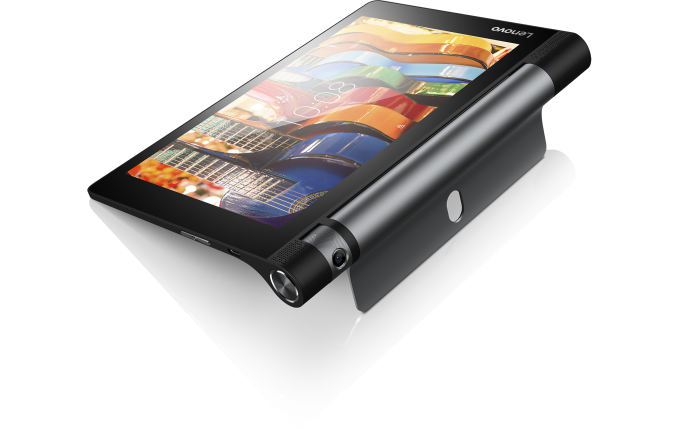


 Quote
Quote_Womens_Hero_575px.jpg)


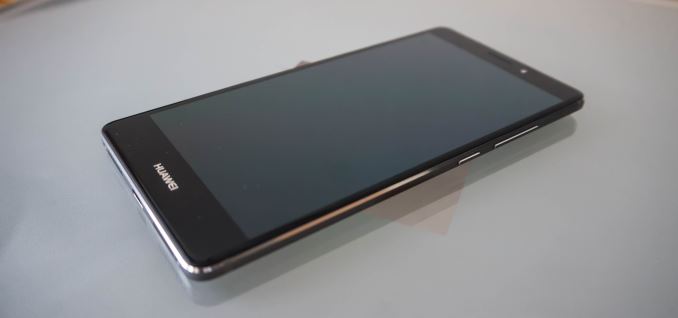
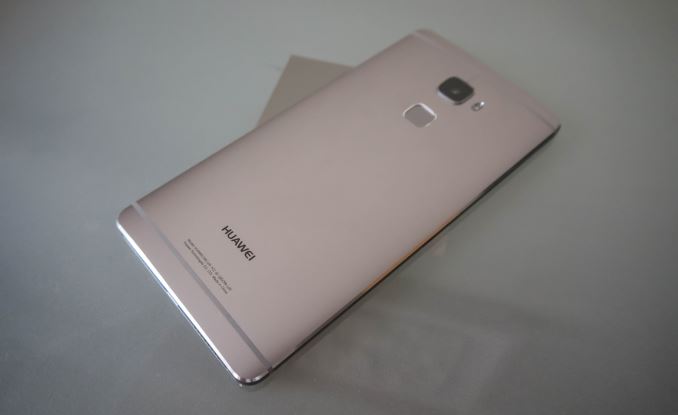


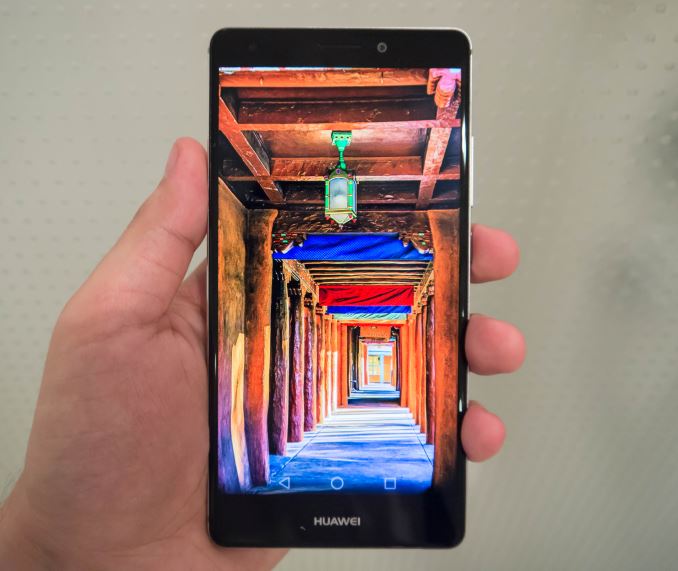
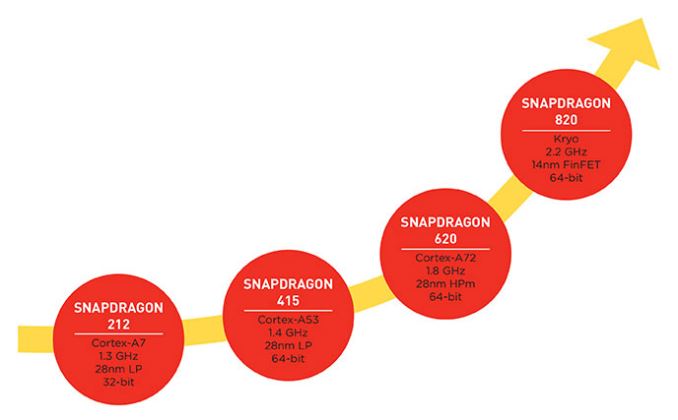
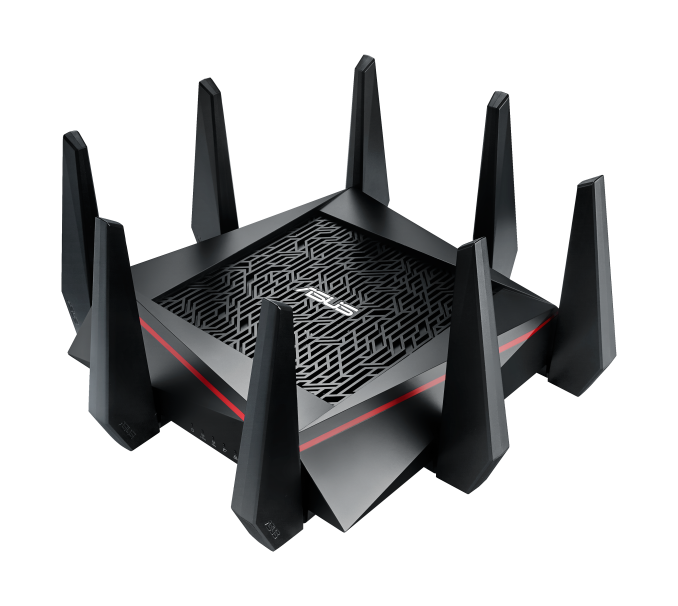
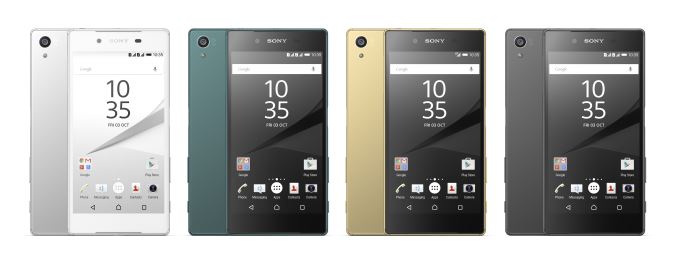


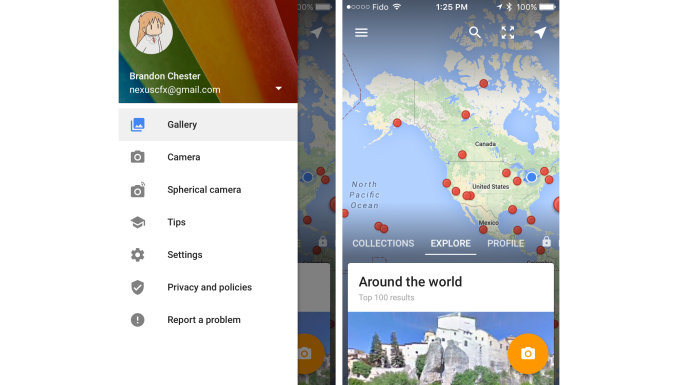
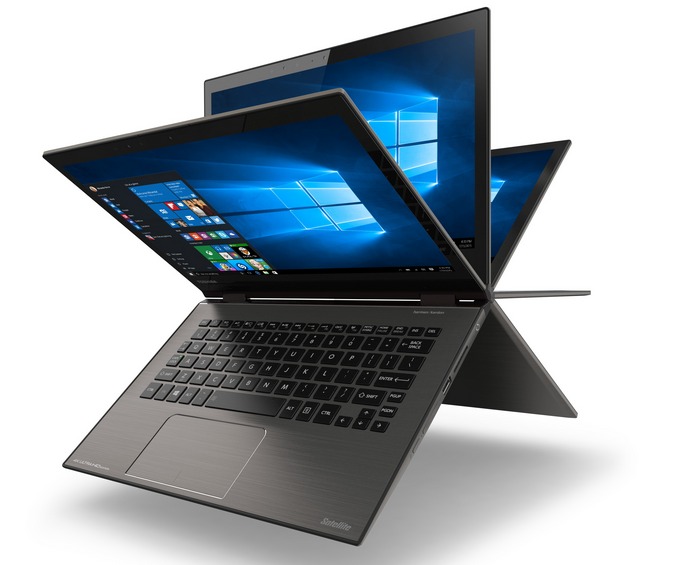




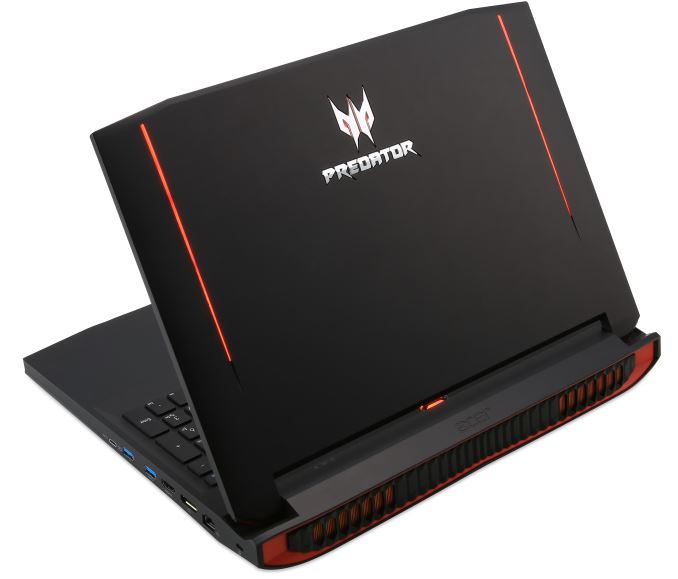




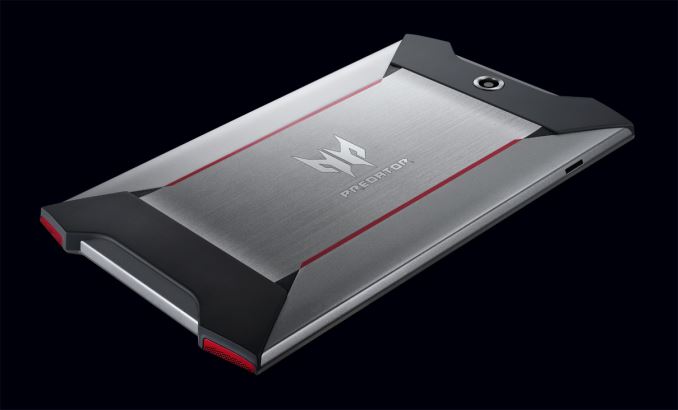



















Bookmarks